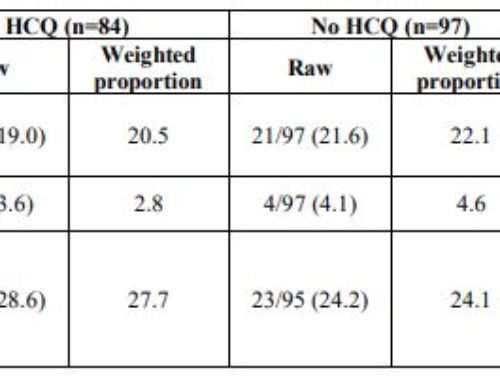You are already caring for or will be caring for patients with COVID-19. Being thoughtful about how you will protect yourself is important, as that is the key to staying healthy, keeping your family healthy, avoiding transmission to other patients and your colleagues. Simply put, exercising precautions effectively will help prevent you and everyone around you from getting sick.
Unfortunately, using PPE properly is not the only step that needs to be taken in order to prevent transmission. It is the responsibility of you, all of those with whom you work, and your leadership to ensure social distancing is respected in the hospital. It will not be helpful to make your family do social distancing at home, while you are going to work and interacting closely with other hospitalists, nurses, and others.
Practices for optimizing precautions and doing your part to limit transmission in the hospital include the following:
PPE Training
You need to learn how to effectively don and doff your PPE. Videos are available and there are also tip sheets out there. The CDC has a nice donning and doffing tip sheet here. Since PPE varies from center to center, you should be sure to have easy access to your hospital’s videos or tip sheets. Watching videos and reviewing tip sheets on donning and doffing NOT sufficient. Ensuring that you don and doff correctly requires more. Establish opportunities for a buddy system, where hospitalists are observed the first several times they enter and exit a room with precautions. Do this NOW, before you get overwhelmed with volume.
Using the Right PPE
PPE recommendations are changing frequently as we gain a better understanding of the virus. We have gone from airborne for all COVID patients to expanding droplet and contact precautions (eye protection, surgical mask, and contact). There are additional stipulations regarding patients who require aerosolizing procedures, such as nebs and CPAP. Keep up to date on any changes in PPE that are instituted at your hospital and be sure to incorporate this into your communication plan expeditiously.
Preserving PPE and Other Supplies
In my post on Crisis Standards of Care #2, I cover the importance of having a strategy to evaluate PPE and other supplies. Emergency management experts recommend creating triggers for limitations in supplies or other resources (negative pressure rooms, staff) and having selected strategies to deal with these challenges. Develop your triggers now for the time when PPE becomes more limited. Given concerns about the supply chain, it would be very reasonable to pull that trigger right now. Many places are now reusing PPE. This does not mean reusing soiled PPE, but does put into place reasonable standards on when you can and cannot reuse PPE. Another way that has been promoted to preserve supplies is eliminating unnecessary testing or treatments that may have limited benefit. For example, Hospital Medicine Exchange discussions recently raised ideas such as taking patients off correctional insulin and 4-times-per day blood sugars unless a patient had significant hyperglycemia (keep in mind, that involves a nurse or PCA gowning up 4 times per day or more), as well as paying particular attention to labs. How about nebs – they (a) are aerosolizing (increasing the risk of transmission to you), and (b) lack good evidence for most patients. Some patients can even self-administer an MDI, and that may be appropriate in some circumstances. We need a “Choosing Wisely for COVID” campaign.
Social Distancing in the Hospital
In order to preserve you workforce and stay healthy, the following social distancing measures for all staff, including clinical staff, should be seriously considering and developed as soon as possible. Do NOT wait to put these measures into place until you experience widespread community transmission. If you have a hospitalist office with workstations that are next to each other, this represents a major risk for transmission. You cannot operate under normal procedures, and use your such workstations as you normally would. Your staff are not immune to community transmission, so if you wait to implement the following measures, that means you will risk losing a significant percentage of your workforce (hospitalist, nurses, etc) when volume begins to ramp up considerably.
- Follow 6-feet spacing recommendations, unless not possible due to patient situations that require a response from multiple staff members
- Ensure that there is a plan for nurses, PCAs, and others to space out on the floors and avoiding congregating in workrooms
- Have all members of the team (PAs, MDs, housestaff if applicable) space apart, do not congregate in workrooms – perform rounds in a conference room (do NOT huddle around a computer screen)
- To ensure spacing is properly followed, work with management to post signs which state the limit on the occupancy of each space, based on each room’s capacity. Start with nursing and physician workrooms on each of the units, as well as the unit stations, as typically people work right next to one another in those areas.
- Move care coordination rounds to virtual, with a call-in line
- Given distancing will limit the number of workstations that can be used at any one time, in order to provide adequate workspace, work with IT to evaluate where additional workstations can be setup which allow for social distancing. Conference rooms can be converted into physician, PA, NP, housestaff and case manager workspaces, with appropriate spacing between workspaces. Be creative – you may find that with ambulatory clinics scaled down, some services closed, and as hospital employees increasingly are working remotely, those offices may become available for clinicians. While considering this plan with your leadership, ensure that consultants have a place to work, perhaps designating a conference room for them.



Steve, tremendous stuff here, thank you!
Have shared your thoughts on down-staffing and reinstituting the old-school model of specialist as attending with folks at my hospital – we need all the tools available, and as you pointedly say, no time like the present to get ready, to talk and prepare everyone for these contingencies.
Best,
Chris Song
New London, CT
Thanks Chris, we need to do this together! Please keep the suggestions coming, I am trying to maintain a reference for all of the wonderful ideas out there, let’s keep the conversation going.
Best, Steve